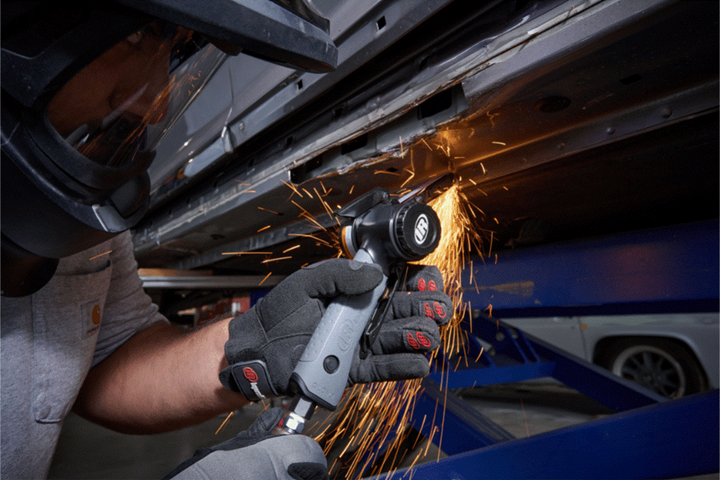Ingersoll Rand Offers Two New Belt Sanders for Smooth Finishes
Ingersoll Rand’s 360-313 and 360-418 Pneumatic Belt Sanders work effectively on metal, plastic, fiberglass, wood and other materials.
Share








ECi Software Solutions, Inc.
Featured Content
View MoreIngersoll Rand has released two new surface preparation tools: the Ingersoll Rand 360-313 and 360-418 Pneumatic Belt Sanders. The sanders help technicians remove stubborn material and create a smooth finish. Using 0.6 hp motors, the sanders are said to power through long days of sanding, deburring and removing spot welds, seam sealer, rust or deposits.
According to Ingersoll Rand, the sanders generate maximum removal rates so shop teams can increase productivity while producing high-quality finishes. The sanders have an adjustable four-position power regulator that technicians set to match the toughness of the material, from heavy weld removal to fine finishing.
The sanders feature a tool-free articulating arm, as well as a the cam lock to adjust the angle of the sanders’ articulating arm within a 270-degree range to reach tight areas such as rivets or welds. No tools are required to adjust the angle.
The 360-313 model has a 3/8" × 13" arm, and the 360-418 model measures 1/2" × 18". Both have an arbor speed of 20,000 rpm and a belt or surface speed of 4,700 surface-feet per minute. A side button on the arm of the sander quickly tightens the arm for abrasive changes.
The multipurpose sanders are designed to meet the needs of applications in auto body work, vehicle service and repair, as well as maintenance, repair and operations (MRO) in light-industrial sectors. Either sander works effectively on metal, plastic, fiberglass, wood and other materials.
Small and lightweight, the sanders are said to provide superior comfort and ergonomics. Their narrow rubber grips are easy to hold, and they are built with a chemical-resistant composite that holds up to the harsh environment of the shop. Belts to smooth, finish and remove material are available in a kit that includes a 60-, 80- and 100-grit belt.
Related Content
-
Shoulder Milling Cuts Racing Part's Cycle Time By Over 50%
Pairing a shoulder mill with a five-axis machine has cut costs and cycle times for one of TTI Machine’s parts, enabling it to support a niche racing community.
-
The Impact of Cutting Teeth Spacing on Machining Stability
Many cutter designs are available, and variable teeth spacing (or variable pitch) cutters can be used to influence milling stability. Let’s discuss why teeth spacing affects stability.
-
Orthopedic Event Discusses Manufacturing Strategies
At the seminar, representatives from multiple companies discussed strategies for making orthopedic devices accurately and efficiently.






















.png;maxWidth=150)

















